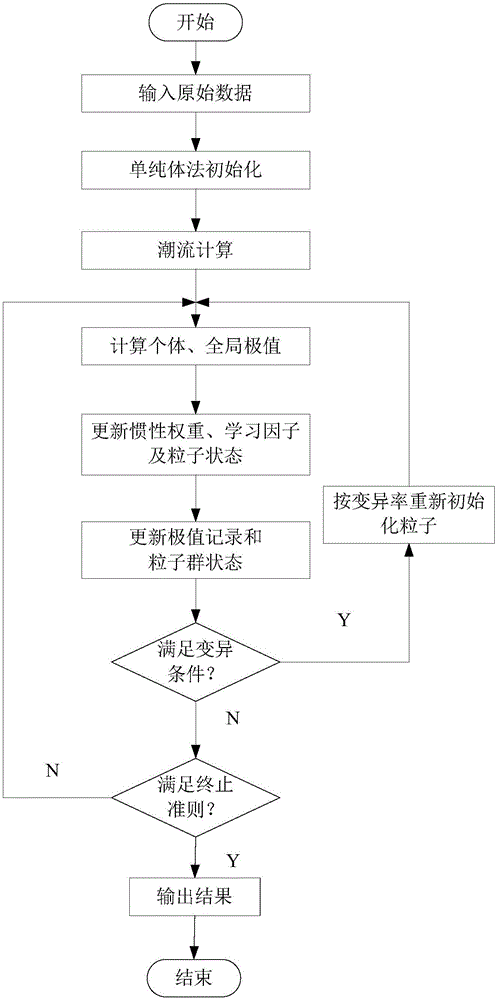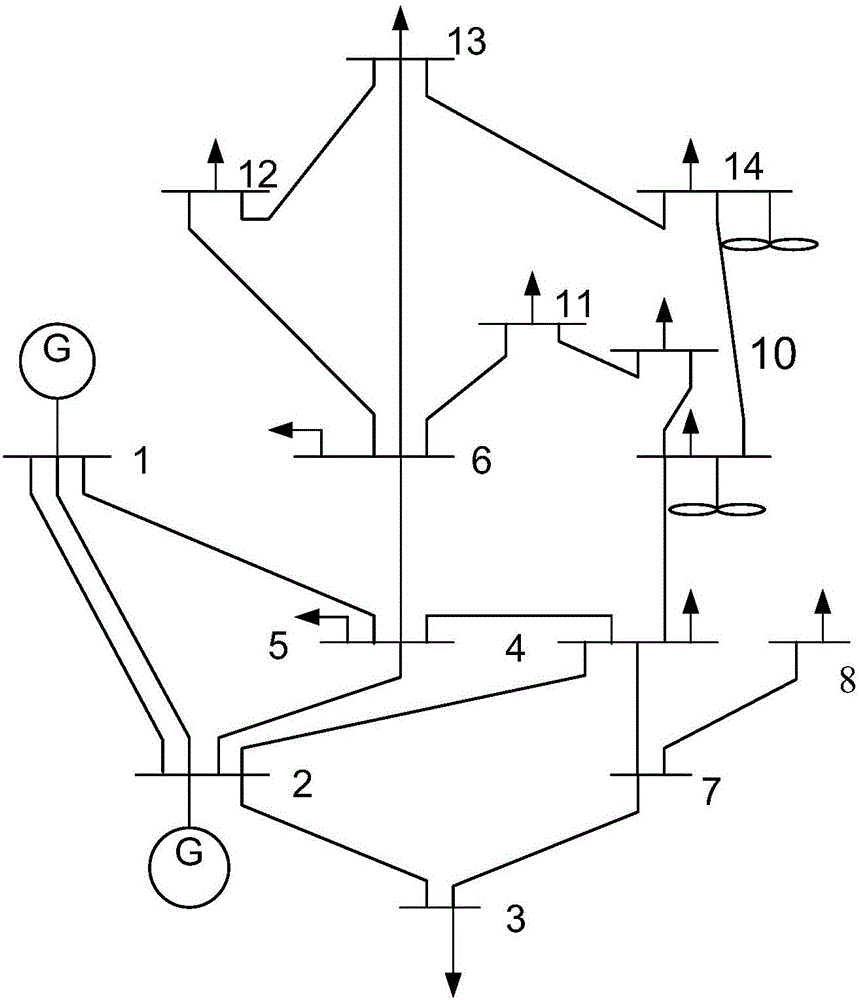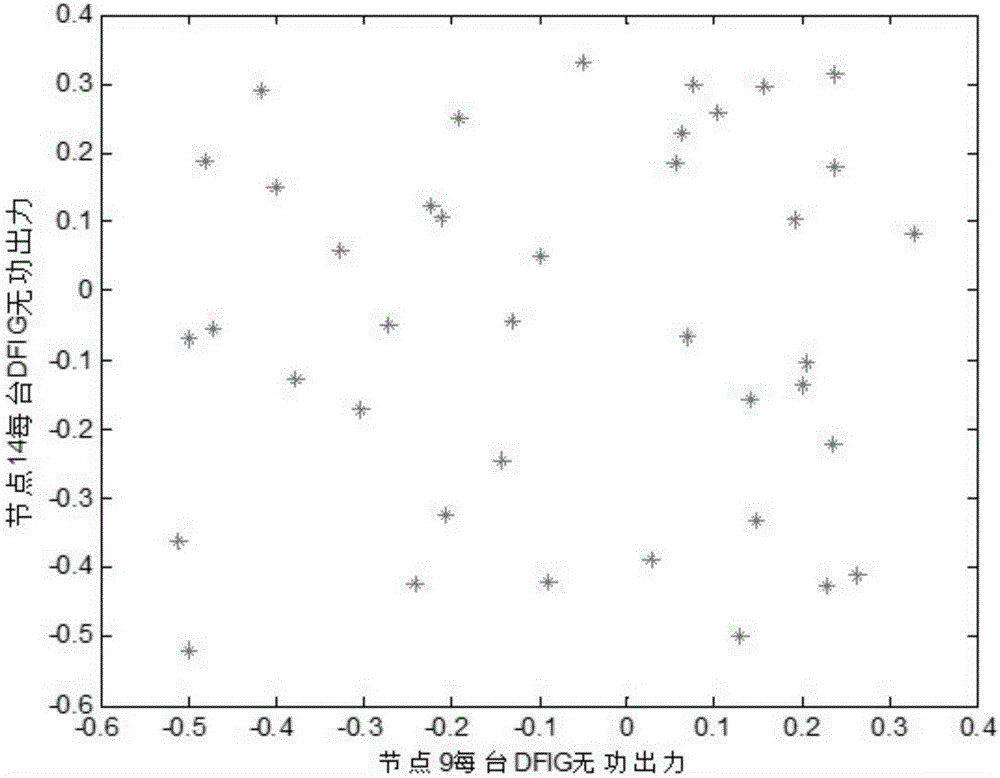Distributed wind turbine generator system reactive power optimization strategy
A technology for wind turbines and optimization strategies, applied in wind power generation, reactive power compensation, reactive power adjustment/elimination/compensation, etc., can solve problems such as unfavorable rapid construction and operation and maintenance of decentralized wind farms
- Summary
- Abstract
- Description
- Claims
- Application Information
AI Technical Summary
Problems solved by technology
Method used
Image
Examples
Embodiment Construction
[0046] The present invention will be described in further detail below in conjunction with the accompanying drawings and specific examples.
[0047] Such as figure 1 As shown, a distributed wind turbine reactive power optimization strategy includes the following steps:
[0048] Step 1, input original data: set particle swarm size M=20, maximum iteration number DT=40, particle dimension N=2; reflection coefficient a=0.9, contraction coefficient b=1.2, expansion coefficient c=0.5; DFIG Reactive output range Q=[-918,635kVar]; maximum value of inertia weight ω max = 0.9, minimum value ω min = 0.4; learning factor C 1 、C 2 The maximum value of C 1max =C 2max = 2.5, minimum C 1min =C 2min = 0.5;
[0049] Step 2, simplex method initialization: initialize the particles in the particle swarm based on the following formulas (1)-(5); where, X i is the vertex of the i-th particle, X i =[X i1 ,X i2 ],X i1 , X i2 Indicates the reactive power output of each DFIG at the place whe...
PUM
 Login to View More
Login to View More Abstract
Description
Claims
Application Information
 Login to View More
Login to View More - R&D
- Intellectual Property
- Life Sciences
- Materials
- Tech Scout
- Unparalleled Data Quality
- Higher Quality Content
- 60% Fewer Hallucinations
Browse by: Latest US Patents, China's latest patents, Technical Efficacy Thesaurus, Application Domain, Technology Topic, Popular Technical Reports.
© 2025 PatSnap. All rights reserved.Legal|Privacy policy|Modern Slavery Act Transparency Statement|Sitemap|About US| Contact US: help@patsnap.com



